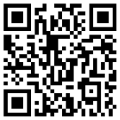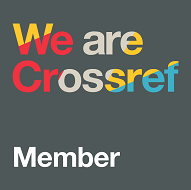Engaging Vocational Students with Construct-Based Games: A Study on Software and Game Development Interest
Abstract
Full Text:
PDFReferences
M. Aristeidou and S. Cross, “Disrupted distance learning: the impact of Covid-19 on study habits of distance learning university students,” Open Learn., vol. 36, no. 3, pp. 263–282, Sep. 2021, doi: 10.1080/02680513.2021.1973400.
L. Major, G. A. Francis, and M. Tsapali, “The effectiveness of technology-supported personalized learning in low- and middle-income countries: A meta-analysis,” British Journal of Educational Technology, vol. 52, no. 5. John Wiley & Sons, Ltd, pp. 1935–1964, Sep. 01, 2021. doi: 10.1111/bjet.13116.
M. D. Abdulrahaman et al., “Multimedia tools in the teaching and learning processes: A systematic review,” Heliyon, vol. 6, no. 11. Elsevier, p. e05312, Nov. 01, 2020. doi: 10.1016/j.heliyon.2020.e05312.
A. Haleem, M. Javaid, M. A. Qadri, and R. Suman, “Understanding the role of digital technologies in education: A review,” Sustain. Oper. Comput., vol. 3, pp. 275–285, Jan. 2022, doi: 10.1016/j.susoc.2022.05.004.
B. Gan, T. Menkhoff, and R. Smith, “Enhancing students’ learning process through interactive digital media: New opportunities for collaborative learning,” Comput. Human Behav., vol. 51, pp. 652–663, Oct. 2015, doi: 10.1016/j.chb.2014.12.048.
D. F. Al Husaeni et al., “The Effect of Using Web-Based Interactive Learning Media for Vocational High School Students to Understanding of Looping: Qualitative Approach,” J. Sci. Learn., vol. 5, no. 1, pp. 115–126, 2022, doi: 10.17509/Jul.v5i1.35534.
A. Prabowo, A. H. Thohari, and D. E. Kurniawan, “Development of Interactive Learning Application for Vocational High School,” in Proceedings of the 2019 2nd International Conference on Applied Engineering, ICAE 2019, Institute of Electrical and Electronics Engineers Inc., Oct. 2019. doi: 10.1109/ICAE47758.2019.9221674.
S. Patmanthara and W. N. Hidayat, “Improving Vocational High School Students Digital Literacy Skill through Blended Learning Model,” in Journal of Physics: Conference Series, IOP Publishing, Jun. 2018, p. 012076. doi: 10.1088/1742-6596/1028/1/012076.
F. Odiana, R. Roemintoyo, and T. Rejekiningsih, “Use of Interactive Multimedia to Support Meaningful Learning for Vocational High School Students in the Pandemic Era,” in ACM International Conference Proceeding Series, Association for Computing Machinery, Sep. 2021. doi: 10.1145/3516875.3516990.
K. Schnitzler, D. Holzberger, and T. Seidel, “All better than being disengaged: Student engagement patterns and their relations to academic self-concept and achievement,” Eur. J. Psychol. Educ., vol. 36, no. 3, pp. 627–652, Sep. 2021, doi: 10.1007/s10212-020-00500-6.
J. L. Howard, J. Bureau, F. Guay, J. X. Y. Chong, and R. M. Ryan, “Student Motivation and Associated Outcomes: A Meta-Analysis From Self-Determination Theory,” Perspect. Psychol. Sci., vol. 16, no. 6, pp. 1300–1323, Feb. 2021, doi: 10.1177/1745691620966789.
K. Asfani, H. Suswanto, and A. P. Wibawa, “Influential factors of students’ competence,” World Trans. Eng. Technol. Educ., vol. 14, no. 3, pp. 416–420, 2016.
D. Sharma, A. K. Sood, P. S. H. Darius, E. Gundabattini, S. Darius Gnanaraj, and A. Joseph Jeyapaul, “A Study on the Online-Offline and Blended Learning Methods,” J. Inst. Eng. Ser. B, vol. 103, no. 4, pp. 1373–1382, Aug. 2022, doi: 10.1007/s40031-022-00766-y.
F. N. Kumala, A. Ghufron, P. P. Astuti, M. Crismonika, M. N. Hudha, and C. I. R. Nita, “MDLC model for developing multimedia e-learning on energy concept for primary school students,” in Journal of Physics: Conference Series, IOP Publishing, Apr. 2021, p. 012068. doi: 10.1088/1742-6596/1869/1/012068.
J. Zhang et al., “Investigating Student Interest and Engagement in Game-Based Learning Environments,” in Lecture Notes in Computer Science (including subseries Lecture Notes in Artificial Intelligence and Lecture Notes in Bioinformatics), Springer Science and Business Media Deutschland GmbH, 2022, pp. 711–716. doi: 10.1007/978-3-031-11644-5_72.
D. Lucardie, “The Impact of Fun and Enjoyment on Adult’s Learning,” Procedia - Soc. Behav. Sci., vol. 142, pp. 439–446, Aug. 2014, doi: 10.1016/j.sbspro.2014.07.696.
J. M. Harackiewicz, J. L. Smith, and S. J. Priniski, “Interest Matters: The Importance of Promoting Interest in Education,” Policy Insights from Behav. Brain Sci., vol. 3, no. 2, pp. 220–227, Jun. 2016, doi: 10.1177/2372732216655542.
N. G. Allison, “Students’ attention in class: patterns, perceptions of cause and a tool for measuring classroom quality of life,” J. Perspect. Appl. Acad. Pract., vol. 8, no. 2, pp. 58–71, Dec. 2020, doi: 10.14297/jpaap.v8i2.427.
A. Ullah and S. Anwar, “The effective use of information technology and interactive activities to improve learner engagement,” Educ. Sci., vol. 10, no. 12, pp. 1–20, Nov. 2020, doi: 10.3390/educsci10120349.
A. Cohen, T. Soffer, and M. Henderson, “Students’ use of technology and their perceptions of its usefulness in higher education: International comparison,” J. Comput. Assist. Learn., vol. 38, no. 5, pp. 1321–1331, Oct. 2022, doi: 10.1111/jcal.12678.
C. Wekerle, M. Daumiller, and I. Kollar, “Using digital technology to promote higher education learning: The importance of different learning activities and their relations to learning outcomes,” J. Res. Technol. Educ., vol. 54, no. 1, pp. 1–17, 2022, doi: 10.1080/15391523.2020.1799455.
DOI: http://dx.doi.org/10.17977/um010v6i22023p%25p
Refbacks
- There are currently no refbacks.
 | Letters in Information Technology Education (LITE) |

1.png)
1.png)
4.png)
1.png)
.png)
.png)

3.png)
1.png)
1.png)

3.jpg)